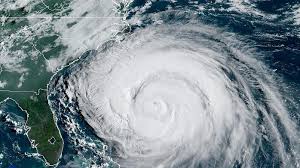WASHINGTON — Car factories have idled in Belgium and Germany. Spring fashion lines are delayed at a popular British department store. A Maryland company that makes hospital supplies doesn’t know when to expect parts from Asia.
Attacks on ships in the Red Sea are delivering another shock to global trade, coming on top of pandemic-related logjams at ports and Russia’s invasion of Ukraine.
Houthi rebels in Yemen, seeking to stop Israel’s offensive against Hamas in Gaza, are attacking cargo ships plying the waters connecting Asia with Europe and the United States, forcing traffic away from the Suez Canal and around the tip of Africa. The disruption is causing delays and driving up costs — at a time when the world has yet to vanquish a resurgence of inflation.
“What’s happened right now is short-term chaos, and chaos leads to increased costs,” said Ryan Petersen, CEO of the supply chain management company Flexport. “Every ship that gets rerouted has 10,000 containers on it. It’s a lot of emails and phone calls getting made to replan each of those container journeys.”
Adding to the bedlam in global shipping is what Petersen calls a “double whammy”: Passage through another crucial trade corridor — the Panama Canal — is restricted by low water levels caused by drought. And shippers are in a rush to move goods before Chinese factories shut down for the Feb. 10-17 Lunar New Year holiday.
The threat grows considerably the longer the war in Gaza drags on. Disruption to Red Sea trade lasting a year could surge goods inflation by up to 2%, Petersen says, piling on pain while the world already struggles with higher prices for groceries, rent and more. That also could mean even higher interest rates, which have weakened economies.
For now, Man & Machine in Greater Landover, Maryland, is awaiting a shipment from Taiwan and greater China. It’s been one setback after another for the company, which makes washable keyboards and accessories for hospitals and other customers.
Who are the Houthis?
The Iranian-backed Houthi rebels in Yemen have sharply escalated their attacks in the Red Sea.
- Houthi rebels swept down from their northern stronghold in Yemen and seized the capital, Sanaa, in 2014, launching a grinding war.
- They have sporadically targeted ships in the region over time, but the attacks have increased since the start of the war between Israel and Hamas.
- Read more on who the rebels are here.
Founder and CEO Clifton Broumand usually gets a shipment of components about once a month, but the latest delivery, which departed Asia four weeks ago, is delayed. The normal route — three weeks via the Suez Canal — has been shut down by the Houthi attacks.
Rerouting to the Panama Canal didn’t work either — the shipment was stymied there by the drought-related mess. Now, it might have to cross the Pacific to Los Angeles and come by truck or train to Maryland. Broumand has no idea when the products will arrive.
“It’s annoying, and it’s interesting. I think our customers, everybody understands. This is not like, ‘Why didn’t you plan this?’ — who knew?” he said. “We call our customers and say, ‘Hey, it’s going to be delayed. This is why it is.’ Nobody likes it, but it’s not going to kill anybody, it’s just another frustration.”
Other industries are seeing similar hassles.
Electric carmaker Tesla has to shut down its factory near Berlin from Monday to Feb. 11 because of shipment delays. The Chinese-owned Swedish car brand Volvo idled its assembly line in Ghent, Belgium, where it makes station wagons and SUVs, for three days this month while waiting for a key part for transmissions.
Production at a Suzuki Motor Corp. plant in Hungary stopped for a week because of a delay in getting engines and other parts from Japan.
The British retail chain Marks & Spencer warned that the turmoil would delay new spring clothing and home goods collections that were due in February and March. Chief executive Stuart Machin said the Red Sea trouble was “impacting everyone and something we’re very focused on.”
Roughly 20% of the clothes and shoes imported into the U.S. arrive via the Suez Canal, said Steve Lamar, CEO of the American Apparel & Footwear Association. For Europe, the impact is even bigger: 40% of clothes and 50% of shoes traverse the Red Sea.







